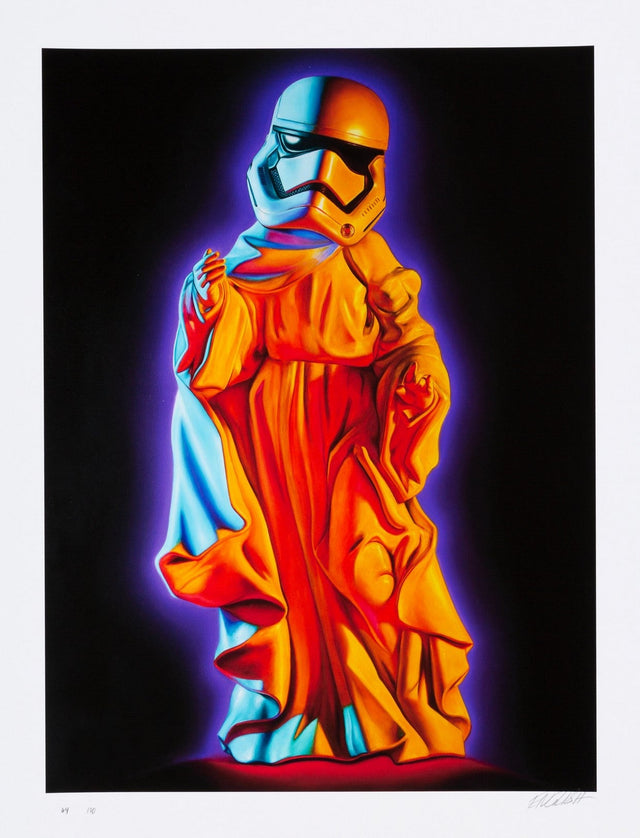
God
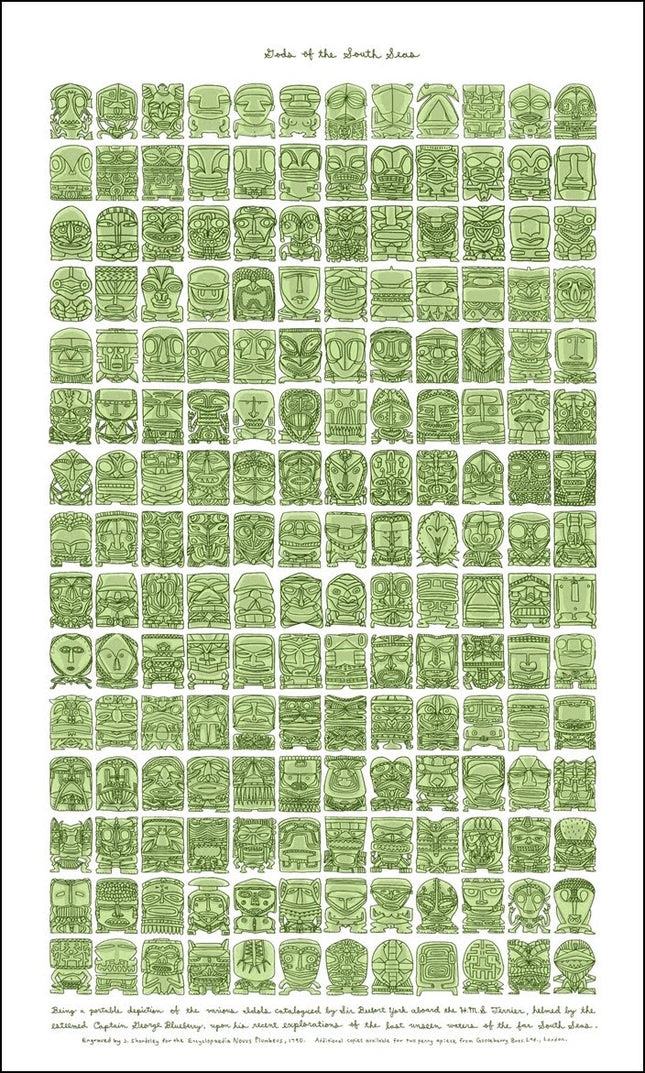
Jacob Borshard Gods of the South Seas Silkscreen Print by Jacob Borshard
Gods of the South Seas Limited Edition 3-Color Hand-Pulled Silkscreen Print on Fine Art Paper by Jacob Borshard Graffiti Street Artist Modern Pop Art. Jacob Borshard presents one hundred and eighty small Polynesian Gods. ‘Being a portable depiction of the various Idols catalogued by Sir Beebort York aboard the H.M.S. Terrier, helmed by the esteemed Captain George Blueberry, upon his recent explorations of the last unseen waters of the far South Seas. Engraved by J. Shardsley for the Encyclopaedia Novus Plumbeus, 1790. Additional copies available for two penny apiece from Gooseberry Bros. Ltd., London.’
$194.00
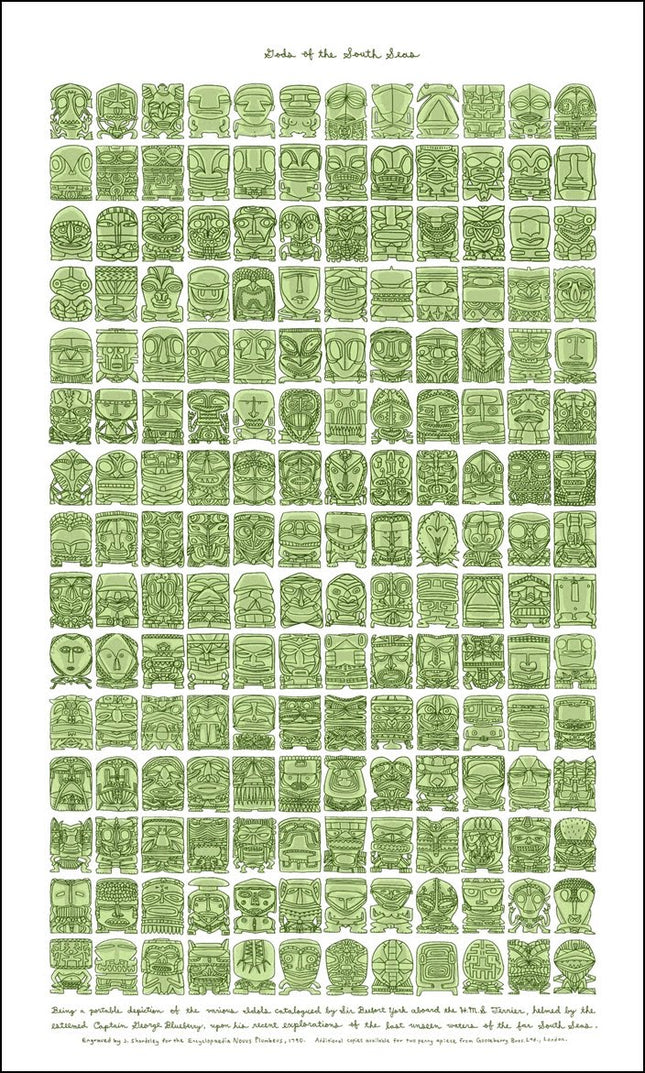
Jacob Borshard Gods of the South Seas Glow Silkscreen Print by Jacob Borshard
Gods of the South Seas Glow in the Dark Limited Edition 3-Color Hand-Pulled Silkscreen Print on Fine Art Paper by Jacob Borshard Graffiti Street Artist Modern Pop Art. 2010 Signed & Numbered Limited Edition of 50 Artwork Size 18x24 Jacob Borshard presents one hundred and eighty small Polynesian Gods. ‘Being a portable depiction of the various Idols catalogued by Sir Beebort York aboard the H.M.S. Terrier, helmed by the esteemed Captain George Blueberry, upon his recent explorations of the last unseen waters of the far South Seas. Engraved by J. Shardsley for the Encyclopaedia Novus Plumbeus, 1790. Additional copies available for two penny apiece from Gooseberry Bros. Ltd., London.’
$198.00
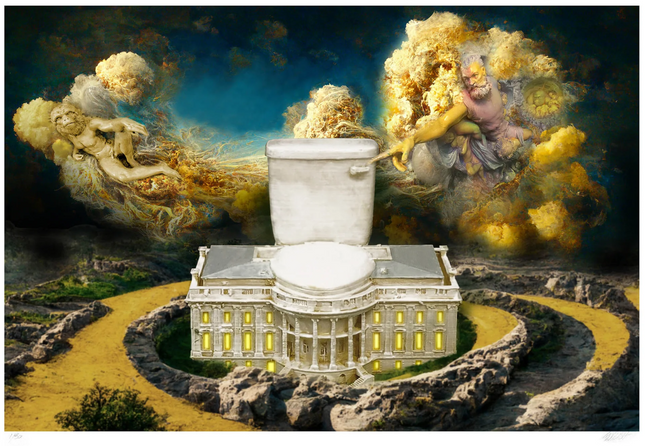
Ron English Flush Giclee Print by Ron English
Flush Giclee Print by Ron English Artwork Limited Edition Print on Fine Art Paper Graffiti Pop Street Artist. 2022 Signed & Numbered Limited Edition of 30 Artwork Size 37x25 Flush Giclee Print by Ron English is an artwork created by the contemporary artist Ron English. Ron English is an American artist who is known for his provocative, colorful, and often satirical works that combine elements of pop culture, advertising, and contemporary politics. He has been referred to as the "Godfather of Street Art" and has been influential in the development of street art and culture jamming. A giclee print is a high-quality, fine art digital print made using a specialized inkjet printer. The term "giclee" is derived from the French word "gicler," which means "to spray" or "to squirt." Giclee prints are typically created using fade-resistant archival inks and are printed on high-quality, acid-free paper or canvas, resulting in a print that has the look and feel of an original piece of art. The Flush Giclee Print by Ron English likely features the artist's signature mix of cultural commentary, humor, and surrealism. However, without a specific description or image of the artwork, it is impossible to give a detailed analysis of the content and subject matter of the piece. If you're interested in acquiring or learning more about this particular print, consider reaching out to an art gallery or the artist himself to obtain more information.
$3,472.00
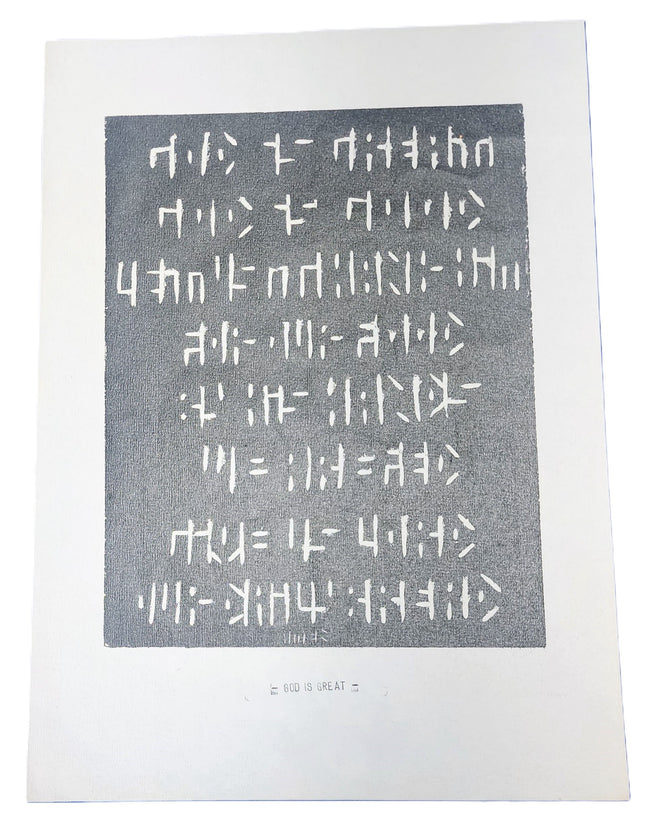
Other Artists God Is Great Script Woodblock Print by Unknown
God Is Great Script Woodblock Print by Unknown Hand-Pulled on Textured Fine Art Paper Limited Edition Artwork. 2008 Limited Edition Woodblock Woodcut Block Print Artwork Size 12x17 of Black & White Fictional Script Words from a St Louis Artist I Forgot the Name of. The Eloquent Silence of "God Is Great" Woodblock Print In visual art, few mediums speak as poignantly to the union of the ancient and the avant-garde as woodblock printing. The "God Is Great" woodblock print, a limited edition piece crafted in 2008, exemplifies the enduring relevance of this time-honored technique in modern artistic discourse. Although the creator from St. Louis remains unnamed, the artwork itself—a stark interplay of black and white fictional script on a textured fine art paper, size 12x17 inches—communicates a universal message that transcends the need for authorial identity. Woodblock Printing: A Dialogue Across Time Woodblock printing, one of the oldest methods of printmaking, has a storied history that stretches from ancient East Asia to contemporary art studios around the globe. The method involves carving an image into the surface of a block of wood, inking the surface, and then pressing it onto paper or fabric to create an impression. With its bold script and abstract composition, this particular piece reflects the technique's robust potential for precision and expression. The black and white color scheme of "God Is Great" reinforces the timeless nature of the print. At the same time, the enigmatic script suggests a language beyond words, an attempt to capture the inexpressible. With its minimalistic yet profound impact, this aesthetic finds echoes in the visual strategies of street pop art and graffiti, where the message is often condensed into symbols or stylized text that resonates with viewers on an instinctual level. Cultural Resonance in Contemporary Art "God Is Great" stands as an artifact of cultural resonance, embodying the essence of what many street artists and pop art practitioners aim to achieve—a piece that is accessible yet profound, immediate yet enduring. It prompts viewers to ponder the power of language, the act of communication, and the possibility of divine presence in the mundane. Despite the anonymity of its creator, the print carries a weight that speaks to the shared human quest for understanding and connection. This woodblock print's presence within pop art, street art, and graffiti is a testament to the fluid boundaries of art forms and the shared visual language that unites disparate genres. While the origin of "God Is Great" may be shrouded in mystery, the work becomes a vessel for contemplation and dialogue, inviting interpretation and engagement from those who encounter it. The "God Is Great" woodblock print, even without the renown of a known artist's signature, is a compelling testament to the power of traditional printmaking techniques in the contemporary artistic landscape. It reminds us that art, in its purest form, is a dialogue that spans history, transcends barriers, and continues to evolve, inviting each viewer to partake in its ongoing narrative.
$100.00





